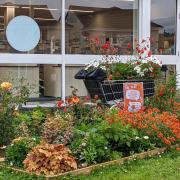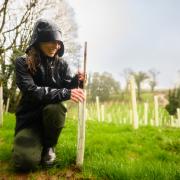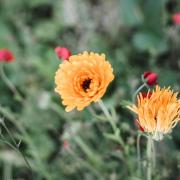You can feel it in the air – spring has arrived in Devon, and it's wonderful! Sweet violets and primroses shine out in the hedgerows and you can almost hear the rush of growth as buds burst from the bare stems...
Toby Buckland delivers some sound practical and seasonal advice
You can feel it in the air – spring has arrived in Devon, and it’s wonderful! Sweet violets and primroses shine out in the hedgerows and you can almost hear the rush of growth as buds burst from the bare stems. This means one thing – it’s time to wake up your garden and make the most of the rapidly lengthening days and the abundance of spring energy.
What to do now
It’s safe to fill gaps left in the wake of winter wet and cold, making sure that new pots are thoroughly watered before going in the ground to guard against spring drought while they establish. If you’re replacing a suspected winter-casualty, before confining it to the compost heap scrape away some of the bark, as if there’s green sap you can give the shrub a reprieve. Pot up dahlias and canna lilies, and plant onion sets into the weed-free beds. It’s also time to plant potatoes into trenches lined with manure, compost, or as my old Uncle Bob used to do, seaweed gathered from the beach. It really adds to the flavour, although you are meant to check with the owner of the beach before you take any. Out in the borders, finish pruning roses and set to work tackling weeds, which is a stitch-in-time job that’s worth making. If you get on top of them now you’ll be set for the rest of the summer.
Plant of the Month
Devon is blessed with a warmer climate, particularly in the coastal areas, and this means we can grow some truly exciting plants, including banana, ginger lilies and my favourite foliage plant, Melianthus. At this time of year, the unfurling blue-green leaves have the delicacy of a fern frond with the exotic exuberance of a tropical palm. Like all foliage plants it requires a sheltered spot protected from leaf-tearing winds and the warmth of a south- or west-facing aspect. The plant in my garden faces east but thanks to a free-draining soil has faced down the recent cold winters, bouncing back with fresh peanut-butter scented leaves every spring. In warm years these are topped with gently arching flower spikes that curve towards their tip like the bushy tip of a red squirrel’s tail. Inside each burgundy bloom sits a blob of sweet nectar, from where Melianthus Major or Honey flower gets its name.
Time to sow seeds
My favourite March job is seed-sowing. It’s time to start tender crops like chillis, tomatoes and aubergines in the greenhouse or on a windowsill, along with sweet peas and petunias. Hardy annuals can be sown directly outdoors, such as ‘Lollo’ lettuce, radish and early peas, along with cottage garden annuals like cornflowers, larkspur and pot marigolds. Always read the seed packet as tiny seeds like begonia need to be left uncovered otherwise they won’t sprout. Tomatoes and seeds of similar size need just a sprinkle over their head to just cover. Whatever the seed, always use fresh compost as old from last year can contain ‘damping-off’ fungi that attacks and kills the seedlings. Victorian gardeners checked to see if the earth was ready for sowing by sitting bare-bottomed on the earth. If it was comfy enough for their derrières then it was cosy enough for the seeds. Perhaps a technique to try when the neighbours aren’t looking!



























